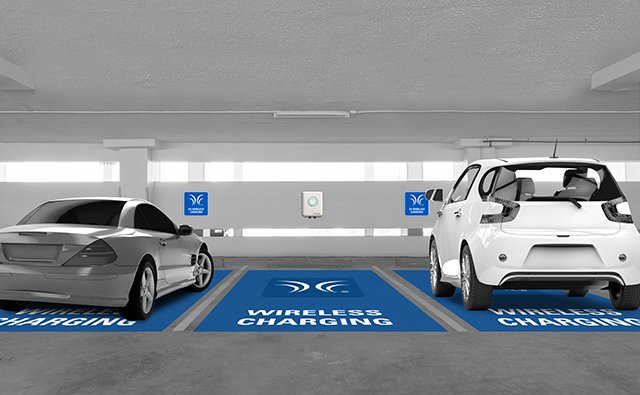Imagine pulling into your garage and having your electric vehicle (EV) charge itself without plugging in. This is not a scene from a sci-fi movie but the reality of wireless EV charging—a technology that promises to revolutionize how we power our cars. As the global push toward green mobility intensifies, wireless charging is emerging as a crucial innovation. In this article, we’ll delve into how wireless EV charging is shaping the future of green mobility, discussing its benefits, technological advancements, and what it means for the future of transportation.
The Rise of Wireless EV Charging
What is Wireless EV Charging?
Wireless EV charging, also known as inductive charging, utilizes electromagnetic fields to transfer energy between a charging pad on the ground and a receiver on the vehicle. This method eliminates the need for cables, reducing wear and tear while offering enhanced convenience. According to Bloomberg Green, the global wireless EV charging market is projected to grow at a CAGR of 45% from 2020 to 2030, making it a vital component in the EV ecosystem.
How It Works
- Inductive Charging Technology: Energy is transferred via a magnetic field between two coils—one in the charging pad and another in the vehicle.
- Positioning and Alignment: For optimal charging, the vehicle must be precisely aligned over the pad, though advancements are being made to improve flexibility.
- Efficiency and Speed: Current systems can achieve up to 90% efficiency, with charging speeds comparable to Level 2 wired chargers.
Key Players and Innovations
- Tesla and Rivian: Both companies have shown interest in wireless charging, with patents filed and prototypes under development.
- BMW and Hyundai: These brands have begun integrating wireless charging capabilities into select models, like the BMW 530e.
- WiTricity and Momentum Dynamics: Leading the charge in developing robust wireless charging infrastructure and technology.
Benefits of Wireless EV Charging
Convenience and Safety
- No More Cables: Eliminating cables reduces trip hazards and the risk of damage from environmental factors.
- Hands-Free Operation: Ideal for individuals with mobility challenges or those living in regions with harsh weather conditions.
Enhanced Urban Planning
- Seamless Integration: Charging pads can be embedded in parking lots, driveways, and roads, optimizing space use in urban environments.
- Future-Ready Cities: Wireless charging is paving the way for smart city initiatives where autonomous vehicles can charge themselves seamlessly.
Environmental Impact
- Reduced Resource Consumption: Less reliance on physical connectors means fewer materials are used in production.
- Increased Adoption of Green Energy: As renewable energy sources become more integrated with EV infrastructure, wireless charging can further reduce the carbon footprint of transportation.
Practical Guide to Wireless EV Charging
How to Use Wireless EV Charging
- Check Compatibility: Ensure your EV model supports wireless charging technology.
- Installation: Professional installation of the charging pad is recommended to ensure safety and efficiency.
- Alignment: Familiarize yourself with your vehicle’s alignment requirements for optimal charging.
Where to Buy
- Authorized Dealers: Brands like Hyundai and BMW offer wireless charging options through their dealerships.
- Online Platforms: Companies like WiTricity provide various consumer solutions available for purchase online.
What to Compare
- Charging Speed: Compare the charging speeds of different wireless systems to match your driving needs.
- Efficiency Ratings: Look for systems with high efficiency to ensure energy is used effectively.
- Cost: Weigh the initial installation costs against long-term convenience and maintenance savings.
Challenges and Future Prospects
Current Challenges
- High Costs: Initial installation and setup can be expensive, though costs are expected to decrease as technology matures.
- Standardization Issues: A lack of universal standards can lead to compatibility issues across different brands and models.
The Road Ahead
- Advancements in Efficiency: Research, such as that from MIT Technology Review, highlights ongoing improvements in energy transfer efficiency.
- Integration with Autonomous Vehicles: Wireless charging is set to become a cornerstone of autonomous vehicle infrastructure, providing a seamless charging solution that aligns with the vision of zero-emission transport.
Conclusion: Embracing a Wireless Future
Wireless EV charging is more than just a convenience—it’s a transformative technology that aligns perfectly with the goals of sustainability and smart urban development. As technology advances and becomes more accessible, wireless charging will likely become the norm, playing a pivotal role in the widespread adoption of electric vehicles.
Are you ready to embrace the future of green mobility? Whether you’re an early adopter or simply curious about the evolution of EV technology, wireless charging presents exciting opportunities for a more sustainable and efficient transportation system. Keep an eye on this space, as the integration of wireless charging into everyday life is just beginning.
As we look towards a future where charging becomes as effortless as parking, the potential for wireless EV charging to shape the landscape of green mobility is limitless. What are your thoughts on this electrifying advancement? Join the conversation and share your insights!

